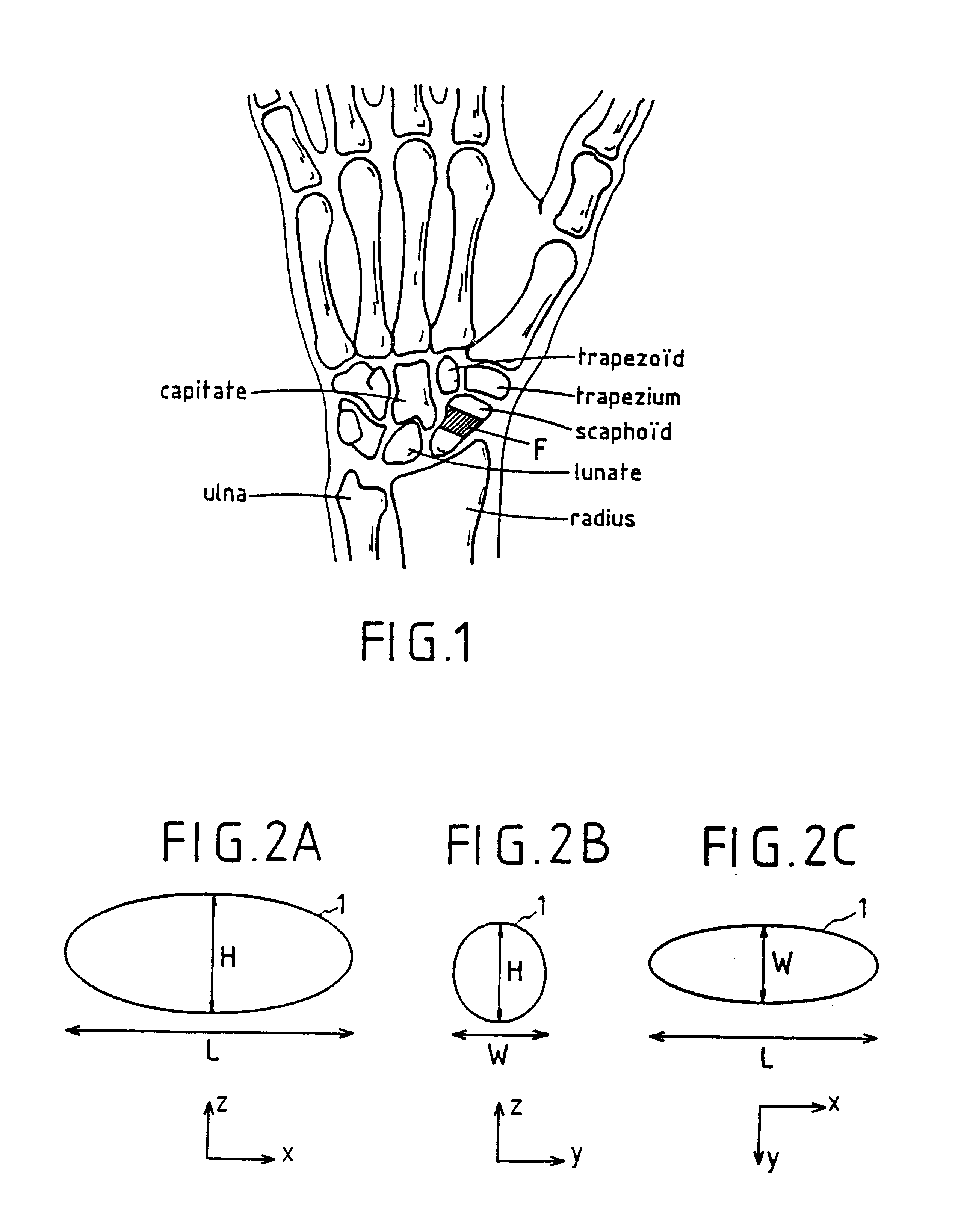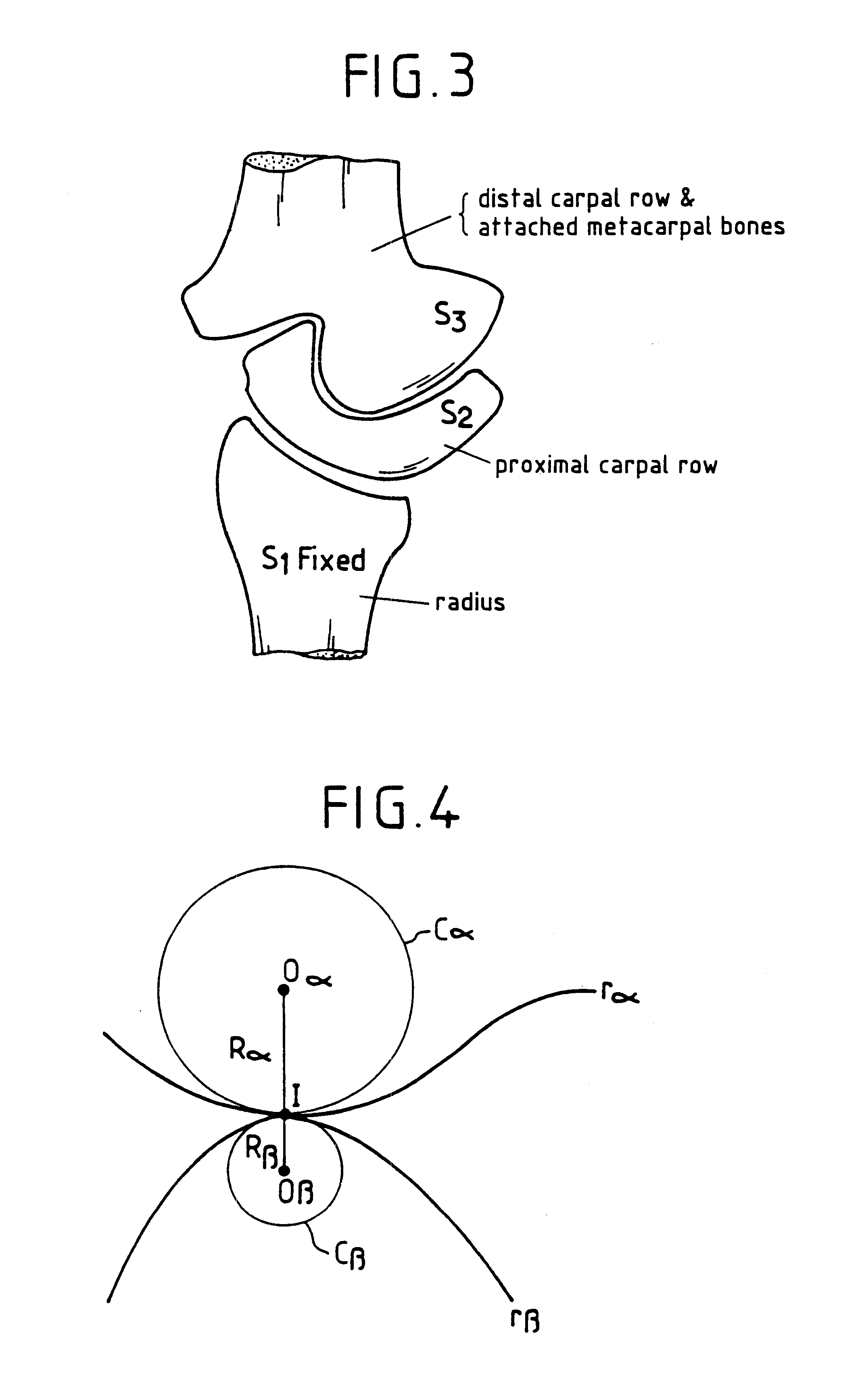Implant for treating ailments of a joint or a bone
a technology for joints and bones, applied in the field of implants or prostheses, can solve the problems of complicated operation, complicated operation, and damage to or degeneration of the scaphoid
- Summary
- Abstract
- Description
- Claims
- Application Information
AI Technical Summary
Benefits of technology
Problems solved by technology
Method used
Image
Examples
first embodiment
FIG. 7 shows the shape of conjugated surfaces J.sub.1, J.sub.2 in a gear having internal contact and illustrates the analogy between the teeth of such a gear and that portion of the solid S2 which corresponds to the scaphoid. It can be considered that the hatched portions of the gear tooth and the solid S2 correspond to the scaphoid. The prosthesis of the present invention is designed to replace that portion of the scaphoid indicated by the cross-hatched portion of the solid S2. In practice, the surface of the radius facing this portion of the scaphoid is not smooth but bowed inwards, such that the prosthesis according to the invention can be considered to correspond to the extremity of the tooth represented by the surface J.sub.2.
Accordingly, the prosthesis of the present invention is designed to have a portion having a large radius of curvature (i.e. a flatter portion) corresponding to the conjugated profile of the scaphoid facing the radius and, for similar reasons, to have a por...
second embodiment
According to the invention, illustrated in FIGS. 10A, 10B, the implant, denoted by reference numeral 2, exhibits an oval first plane section (FIG. 10A) and a second plane section, perpendicular to the first plane section, which takes the form of a disc (FIG. 10B). The contour of the oval plane section is composed of arcs of circles, and more specifically of a first pair of facing arcs of circles having respective radii of curvature R1 and R2, and a second pair of facing arcs of circles having respective radii of curvature R3 and R4, with R1 and R2 being greater than R3 and R4. In the example as shown in FIGS. 10A, 10B, the radii R1 and R2 are equal to each other, as well as radii R3 and R4.
third embodiment
According to the invention, illustrated in FIGS. 11A, 11B, 11C, the implant, denoted by reference numeral 3, has a first surface portion 30 whose intersection with each one of the perpendicular planes (x,z), (y,z) is concave, and a second surface portion 31, facing the first portion 30, whose intersection with each one of the perpendicular planes (x,z) and (y,z) is also concave. The implant 3 further comprises two lateral surface portions 32, preferably substantially curved, connecting the surface portions 30 and 31 to each other. In plane section in the plane (x,y), the implant 3 exhibits an oval or substantially elliptic shape. By "substantially elliptic", it is meant that this plane section may be elliptic, almost elliptic, circular or composed of arcs of circles.
PUM
| Property | Measurement | Unit |
|---|---|---|
| Pressure | aaaaa | aaaaa |
| Pressure | aaaaa | aaaaa |
| Length | aaaaa | aaaaa |
Abstract
Description
Claims
Application Information
 Login to View More
Login to View More - R&D
- Intellectual Property
- Life Sciences
- Materials
- Tech Scout
- Unparalleled Data Quality
- Higher Quality Content
- 60% Fewer Hallucinations
Browse by: Latest US Patents, China's latest patents, Technical Efficacy Thesaurus, Application Domain, Technology Topic, Popular Technical Reports.
© 2025 PatSnap. All rights reserved.Legal|Privacy policy|Modern Slavery Act Transparency Statement|Sitemap|About US| Contact US: help@patsnap.com



